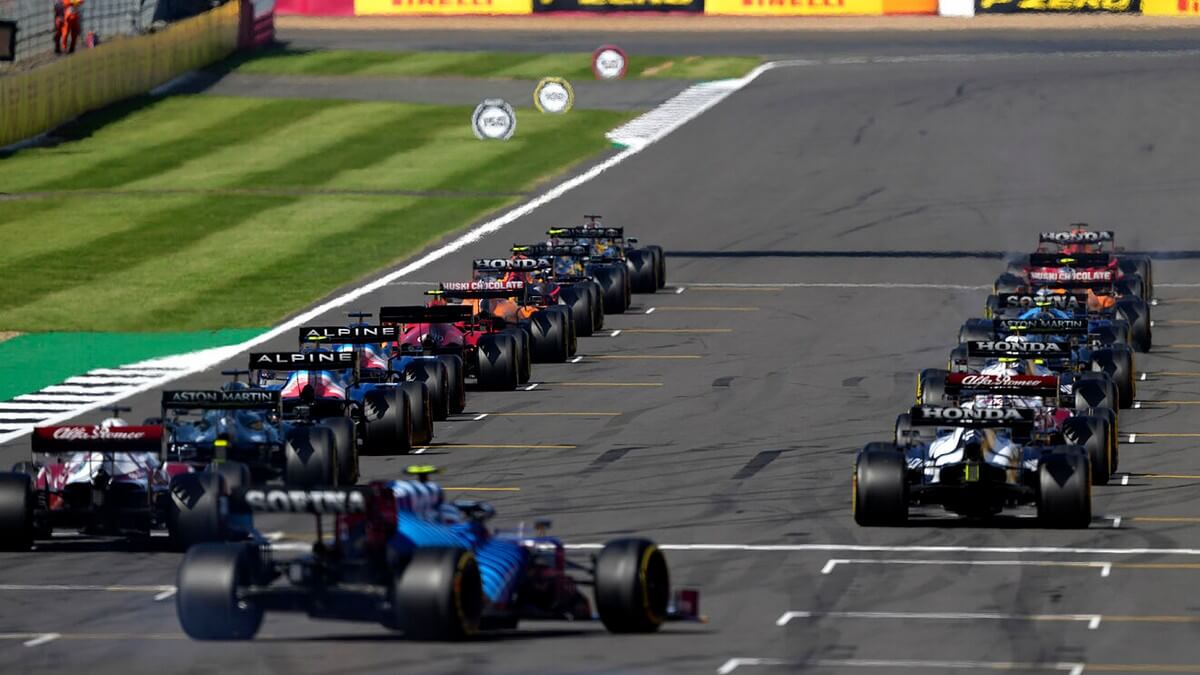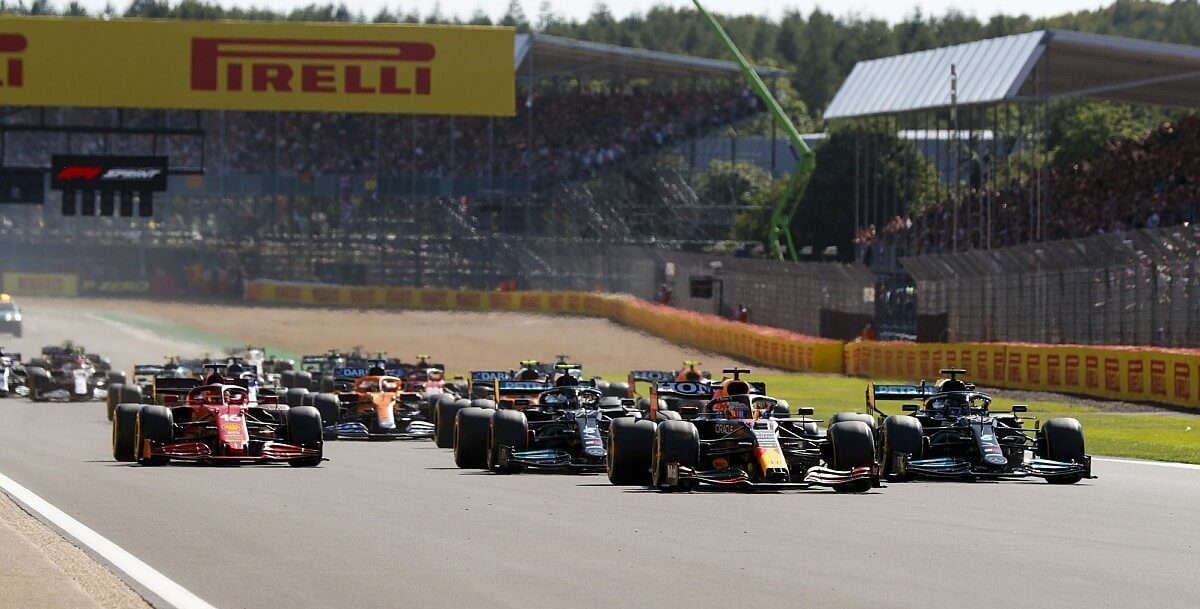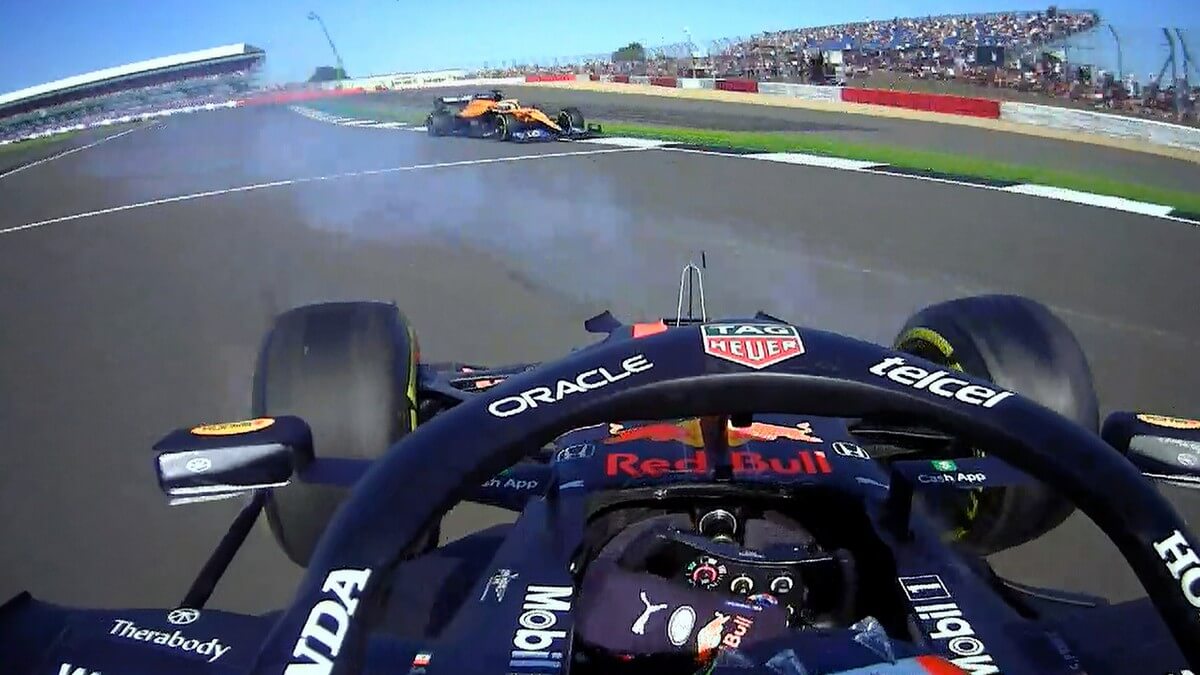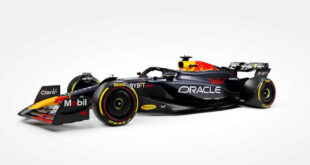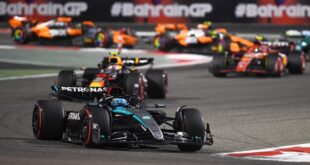Formula 1 tested a new type of race weekend format at the British GP called “Sprint Qualifying,” and here is what we think of it.
If you haven’t been aware of the recent regulation changes in F1, you might’ve been perplexed to find out that, last weekend, qualifying was on Friday, then there was the FP2 and a short sprint race on Saturday, and the full race on Sunday. This is an overview of the ‘Sprint Qualifying’ format that F1 recently introduced to give all old and new fans something new to cheer about.
Let’s dive right in!
Race Format
For those of you who are new to F1, this is how a typical race weekend works: 23 races in a season are held at different parts of the globe, with each race having three practice and qualifying sessions, allowing teams to gather telemetry about the car’s parameters, including tires and other minor adjustments. The aim is to find the perfect setup and beat other rivals on the track.
These practice sessions give a rough idea of the pace differential between each team and driver. However, the true indicator of performance is determined by timing charts during qualifying sessions. The sessions follow a system of elimination, wherein the top 15 out of 20 drivers progress from Q1 to Q2; Top 10 out of 15 from Q2 to Q3, and a qualifying shoot-out determines the top 10 grid positions. The driver who sets the fastest time gets the pole position and starts from the grid’s front row on Sunday. Teams and drivers experiment with different strategies and tactics to secure their best starting position. However, that’s how it used to work.
In the Spring Qualifying format, drivers follow the traditional format on Friday to set the grid for the Sprint race on Saturday. The race is a 62-mile dash to the finish line with no mandatory pit stops or team orders—just pure racing. At the end of the shoot-out, the top 3 competitors get awarded championship points for their finishing order. Namely, the driver who finished P1 receives the title of ‘sprint king’ and 3 championship points. Meanwhile, P2 and P3 get 2 & 1 point(s) each.
Sprint Race Recap
F1 hosted its first-ever Qualifying Friday since 2003, owing to an experimental format at the British GP. There were a few surprise performances and entrants into Friday’s Q3. The pecking order in the top 10 of the Sprint Grid included Hamilton, Bottas, Verstappen, Leclerc, Perez, Norris, Ricciardo, Russell, Sainz, & Vettel. Hamilton and Russell were favorites among the crowd, with separate stellar performances to beat Verstappen and finish P8, respectively.
The Sprint Race on Saturday was set for 17 laps for a total race distance of 62 miles. Drivers lined up on the Hamilton straight and ready to take-off. As the lights went out, Verstappen got an excellent start and overtook championship rival Hamilton to take the lead into Turn 1. The top 10 remained relatively unchanged, except Vintage Alonso. Channelizing his earlier F1 days, Fernando sprung off the line from the start, gaining six places within the first lap to go from P11 to P5!
Meanwhile, Verstappen started to pull away from the Mercedes. During Lap 3 or 4, a lock-up by Russell into T3 forced him wide, and he came in contact with Carlos Sainz. As a result of the freak maneuver, Sainz dropped down to the back of the field.
A few moments later, Perez nearly lost control of his RB16B in a bizarre incident at the Hangar straight. The altercation resulted in front wing damage and minor floor damage, dropping him back to the field. Eventually, he retired from the race in the 16th lap. Meanwhile, Alonso’s soft tires started degrading after 7-8 laps and pressure mounted on him to defend his position against the two McLaren drivers. He also received radio messages from his engineer regarding the aggressive defending during braking. Soon, the Mclarens of Norris and Ricciardo overlook in P5 and P6.
Below the top 10, Sainz put on an impressive recovery drive and moved up to P11, thanks to the ensuing DRS train in the race. Verstappen cruised the race from Lap 1 to steal 3 points and the pole position from Hamilton and Bottas, respectively.
Analysis
The Sprint Race brings an exciting and unusual racing format at a regular GP weekend. For starters, it employs a mix of the traditional format and a flavor of the Sunday race.
Technically, since F1 designed it to be a qualifying race, short and fast-paced action became the norm for the weekend. It instills a greater competitive spirit among drivers as opposed to the Sunday race. Besides, drivers who lost out in qualifying made the best use of the start and driving abilities to finish higher on the grid (Eg:- Fernando Alonso).
Also, understanding tires and car setup becomes much more manageable since pit stops and team orders aren’t mandatory for the sprint race. This gives an inherent advantage to the teams and drivers and helps in making sound race strategies.
This format does bring its own set of limitations, though. Being fast-paced and action-packed comes with a double-edged sword—it is limited to tracks where overtaking opportunities are imminent. The championship system only favors the top three with Mercedes, and Red bull takes up a major chunk at the top.
In my opinion, a mix of the two formats at appropriate locations could do wonders for the sport going ahead. Change is not easy at first, but it would become a standard once it’s adapted well.
Will the 2022 Regulations Suit Sprint Races?
The next set of technical regulations in F1 from 2022 placed a key focus on improving wheel-to-wheel racing and fair competition among the constructors. Meanwhile, F1 introduced Sprint Racing this year to challenge the traditional format and improve racing amongst drivers.
Having a much simpler and less intrusive aerodynamic setup should, in theory, reduce ‘dirty air’ and allow cars to have a better chance of following the car ahead. In this regard, sprint races should work quite well. F1 still hasn’t announced the two other spring races are yet to be announced. Regardless, it will be interesting to see how this bodes in the future.
Innovation and experimentation are a core part of the sport’s philosophy. Some rules are subject to criticism at first but soon become a standard as the seasons go on. However, the vice-versa is also true.
No one knows what will happen next, and that is the very nature of the sport that keeps fans hooked!
Stay tuned!


